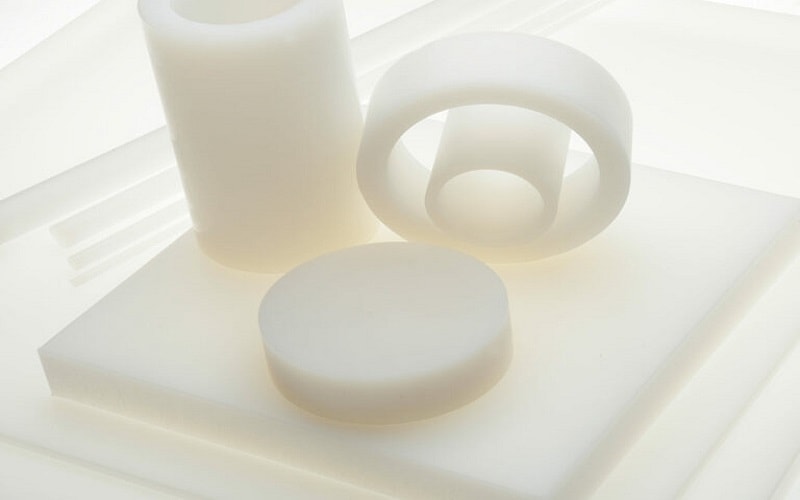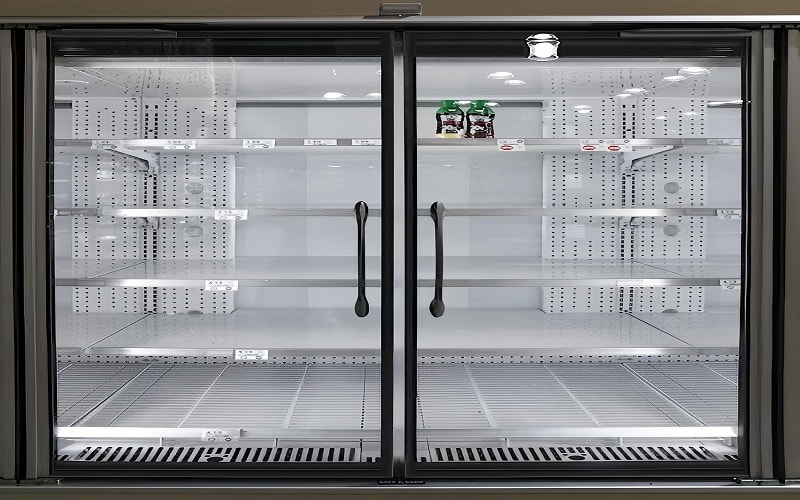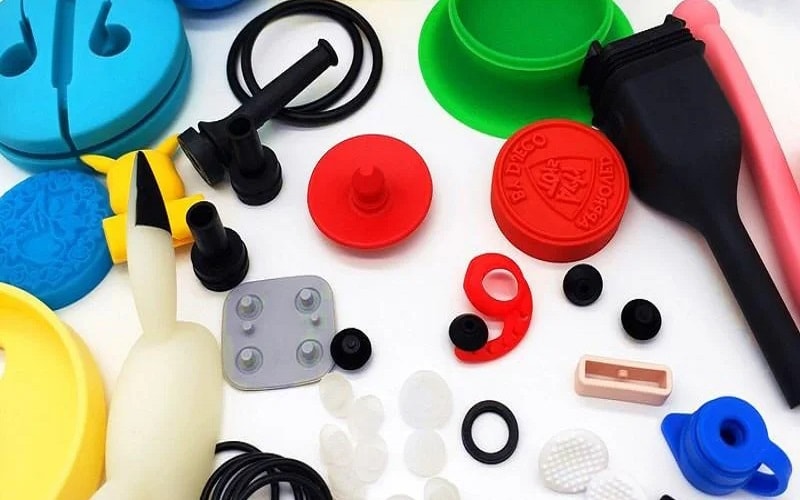Need solutions for extreme cold applications? Low temperature plastics are engineered to perform in freezing conditions where ordinary plastics fail.
This article covers what low temperature plastics are, why they’re essential, and which types offer superior performance in low temperatures.
Understanding Low Temperature Plastics

Low temperature plastics play a pivotal role in industries that operate under extreme cold conditions, such as refrigeration and outdoor infrastructure. The choice of plastic for such applications is significantly influenced by its operating temperature range, which must align with the specific needs of the application.
Assessing how these plastics perform under low temperatures is vital for reliability, as different plastics behave differently when exposed to cold.
Glass Transition Temperature
The glass transition temperature is a critical concept in understanding the behavior of plastics at low temperatures and high temperatures.
It defines the point where plastics transition from a flexible, rubber-like state to a rigid, glassy state, significantly affecting their mechanical performance and dielectric properties. This transition leads to considerable changes in properties such as brittleness, elasticity, and dielectric properties at varying temperatures.
As temperatures drop or rise to high temperatures, molecular chains within the plastic shrink or expand, further influencing their performance at the glass transition temperature.
This phenomenon determines a plastic’s suitability for low and high temperature applications, as materials with lower glass transition temperatures maintain flexibility and stable dielectric properties better in extreme conditions.
Molecular Chains and Cold Resistance
The structure of molecular chains within plastics plays a vital role in their cold resistance, particularly for achieving close tolerances in many applications. As temperatures fall, the stiffness of these molecules impacts the material’s flexibility and mechanical strength.
Plastics with more flexible molecular chains tend to exhibit better cold resistance, making them suitable for many applications in extreme cold environments while maintaining close tolerances.
The length and arrangement of these chains directly influence the plastic’s ability to resist cold temperatures, with more flexible structures generally providing enhanced performance in such conditions for many applications. This molecular behavior must be considered when selecting plastics for high cold resistance applications requiring close tolerances.
Top Low Temperature Plastic Materials

Certain materials stand out for low temperature applications due to their exceptional properties and performance under extreme cold. PTFE and PVC, for example, offer benefits that cater to a wide array of industrial needs.
PTFE (Polytetrafluoroethylene)
PTFE, commonly known as Teflon, is renowned for:
- Excellent chemical resistance
- Ability to perform in extreme cold environments, with a minimum operating temperature of -240 °C (-400 °F), making it highly effective in cryogenic conditions
- Ideal use in applications such as seals and components in demanding industrial settings
Moreover, its mechanical properties can be enhanced with additives like fiberglass, further improving its performance.
A practical example of PTFE’s utility is its use in replacing UHMW-PE seals in microfluidizers, showcasing its suitability for various industrial seal applications. This demonstrates PTFE’s versatility and robustness in extreme conditions.
PFA (Perfluoroalkoxy)
PFA offers a remarkable comprehensive range temperature range, usable from -260°C to 260°C. This makes it an excellent choice for applications that require both high and low temperature resistance.
Its ability to be processed using traditional methods like injection molding and extrusion further enhances its process versatility.
ABS (Acrylonitrile Butadiene Styrene)
ABS is known for its robust performance in low temperatures, maintaining its properties down to -20°C (-4°F). Its impact resistance and ability to endure cold without becoming brittle make it a popular choice in refrigeration units and electrical applications. This versatility highlights ABS’s effectiveness in both industrial and consumer products.
ABS’s chemical structure enhances its engineering capabilities, allowing it to withstand low temperature stresses while maintaining mechanical strength, making it reliable for various cold environment applications.
PE (Polyethylene)
Polyethylene is a highly versatile thermoplastic widely used in various applications due to its excellent chemical resistance and impact strength. Different types of polyethylene, such as PE-UHMW, are particularly adept at handling low temperature environments, with some varieties operating effectively at temperatures as low as -200°C.
Applications of polyethylene include machinery parts and snow plow blades, where its performance in cold climates is crucial. This makes PE a valuable material in both industrial and outdoor applications.
PVC (Polyvinyl Chloride)
Flexible PVC is known for its versatility and ability to operate in a wide temperature range from -60°C to 105°C. Its resilience and durability under temperature fluctuations make it suitable for applications like seals, gaskets, piping, and belts.
PVC’s extensive use in piping and gaskets is attributed to its ability to maintain performance across various temperature conditions. This makes it a reliable choice for both industrial and residential applications.
Applications of Low Temperature Plastics

Low temperature plastics are indispensable across numerous industries due to their ability to maintain performance in extreme cold conditions, including many plastics, even at cryogenic temperatures.
From food storage to electronics, these materials enhance safety, efficiency, and longevity in various demanding applications involving metals.
Cold Storage and Refrigeration
In cold storage and refrigeration, low temperature plastics like polyethylene (PE) and acrylonitrile butadiene styrene (ABS) are essential. These materials endure temperatures as low as -200°C, ensuring refrigeration units and cold storage systems function properly. Their resilience maintains the integrity of stored goods and the efficiency of these systems.
PVC is also widely used in cold storage applications for gaskets and piping due to its versatility and ability to withstand temperature fluctuations. This makes it an essential material in constructing efficient and reliable cold storage solutions.
Electrical and Electronics
In the electrical and electronics industry, engineering plastics play a critical role. PFA, for instance, is commonly utilized in semiconductor applications due to its thermal stability and purity. Its excellent resistance to chemical corrosion makes it ideal for environments involving harsh chemicals.
These plastics maintain performance under extreme conditions, ensuring the reliability and longevity of electrical components and plastic component, consistent energy delivery, and operational stability.
Outdoor Infrastructure
Outdoor infrastructure greatly benefits from low temperature plastics, particularly in plumbing and sewage systems. Materials commonly used include:
- PFA
- PTFE
- PVC. Most plastics are chosen due to their excellent performance in cold environments. They maintain their integrity even under freezing conditions, preventing issues such as pipe bursts and sewage system failures.
The durability and reliability of these materials make them advantageous for outdoor applications exposed to harsh weather, ensuring a longer service life and reduced maintenance needs.
Sports and Recreation
In the realm of sports and recreation, low temperature plastics are essential for equipment designed for cold weather activities. These materials prevent brittleness, ensuring durability and performance during use in frigid conditions. For example, snowboarding and skiing gear often incorporate low temperature plastics to maintain safety and functionality.
By preventing materials from becoming brittle, low temperature plastics ensure that sports equipment remains reliable and safe, enhancing the overall experience for users.
Testing and Performance Evaluation of Low Temperature Plastics

Testing and performance evaluation are critical for understanding how low temperature plastics behave under extreme conditions. Various methods are employed to assess their mechanical properties, thermal expansion, and overall durability. The test results provide valuable insights into their performance.
Ultra-Low Freezer Testing
Ultra-low freezer testing is a commonly used method to evaluate plastics’ resistance to cold temperatures. Manufacturers use ultra-low deep freezers to lower the temperature of plastics and then conduct tests to observe changes in structure and properties. This method is essential for determining how plastics will perform in extreme cold environments.
Exposing plastics to low temperatures helps manufacturers identify potential issues like brittleness and fracture, ensuring reliable heated performance for specific applications. This process can also help prevent a break in the material’s integrity, as the plastics are subjected to various conditions.
Mechanical Properties Assessment
Assessing the mechanical properties of low temperature plastics is crucial for ensuring their performance under extreme conditions. These properties can change significantly when exposed to cold, necessitating careful selection based on application requirements. Impact modifiers play a vital role in enhancing the resilience of plastics, enabling them to better withstand the stress of low temperatures.
By incorporating impact modifiers, the mechanical strength and toughness of modified plastics can be improved, making them more suitable for demanding applications.
Thermal Expansion and Dimensional Stability
Dimensional stability is a key factor in the performance of low temperature plastics. It measure a material’s ability to maintain fit, form, and functional properties even under cold conditions. Low thermal expansion rates are essential to prevent deformation in cold environments.
Testing methods like dynamic mechanical analysis (DMA) and creep behavior testing are used to assess the thermal expansion and stability of plastics under compression over time.
These tests help predict how materials will deform under constant mechanical stress, ensuring that when subjected to temperature changes, the material expands in cold applications.
Selecting the Right Low Temperature Plastic for Your Application

Selecting the right low temperature plastic involves considering various factors such as dimensional stability, precision, mechanical strength, and compatibility with manufacturing processes.
Choosing materials that determine the specific requirements of the application is essential.
Considerations for Material Selection
When selecting plastics for low temperature applications, it is essential to consider features like chemical resistance, mechanical strength, and thermal conductivity. Compatibility with various chemicals is particularly important for applications involving exposure to aggressive substances.
Applications needing super toughness often use high levels of impact modifiers, around 20-25%. Reactive modifiers, used in amounts of 5-15%, provide the required flexibility and resistance.
Industry-Specific Recommendations
Low temperature plastics play a critical role in ensuring material performance and longevity across multiple industries. Industries such as:
- refrigeration
- electrical insulation
- plumbing
- sports equipment manufacturing commonly utilize these materials.
Using low temperature plastics can significantly enhance the durability and effectiveness of products in extreme cold environments, leading to better performance and reliability. It’s crucial for industries to select appropriate materials based on specific application requirements to optimize performance and extend service life.
Enhancing Low Temperature Plastic Performance with Additives
Additives play a vital role in enhancing the performance of low temperature plastics. They improve properties such as impact resistance, thermal insulation, and chemical resistance, making these materials suitable for a wide range of applications.
Impact Modifiers
Impact modifiers are essential additives that enhance the toughness and impact resistance of plastics, especially in cold environments where brittleness is a concern. The mechanical properties assessment, including impact resistance, plays a critical role in testing the performance of plastics under low temperature conditions.
When selecting impact modifiers, it is crucial to consider factors such as compatibility with the base polymer, the required level of impact resistance, and the specific temperature conditions the plastic will face.
Thermal Insulators
Thermal insulators are crucial for maintaining the stability of low temperature plastics by minimizing heat transfer. This is essential for preserving the structural integrity and performance of plastics exposed to extreme temperatures. Thermal insulators prevent thermal shock and minimize heat loss, helping materials withstand the rigors of cold environments.
Certain polymers, particularly foams, are highly effective thermal insulators, significantly reducing heat transfer and ensuring that low temperature plastics remain functional and reliable under extreme conditions. This makes thermal insulators indispensable in applications where maintaining temperature stability is critical.
Chemical Resistance Enhancers
Chemical resistance enhancers play a vital role in extending the lifespan of low temperature plastics, especially when exposed to harsh chemical environments. These additives protect the plastics from degradation caused by aggressive chemicals, ensuring their durability and maintaining their mechanical properties.
Chemical resistance enhancers allow low temperature plastics to endure harsh environments, greatly enhancing their durability and usability. These highly resistant fillers are vital for applications involving chemical exposure and resistant materials.
Summary
In conclusion, low temperature plastics are indispensable materials in numerous industries that face extreme cold conditions.
Understanding the properties of these plastics, such as their glass transition temperature and molecular chain structure, is crucial for selecting the right material for specific applications.
The top low temperature plastic materials, including PTFE, PFA, ABS, PE, and PVC, offer a range of benefits that cater to various needs.

